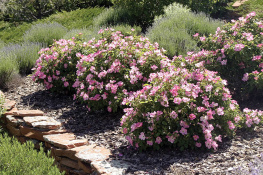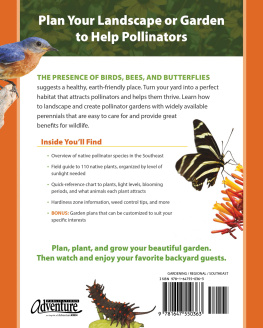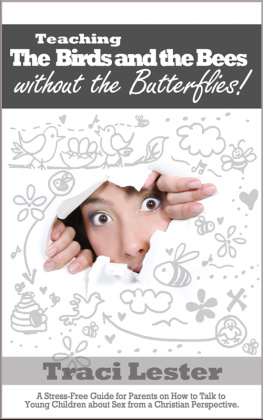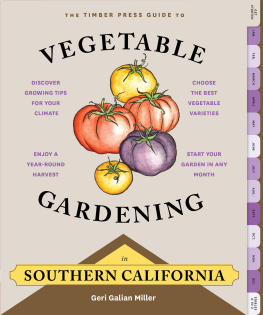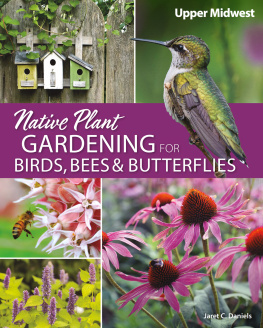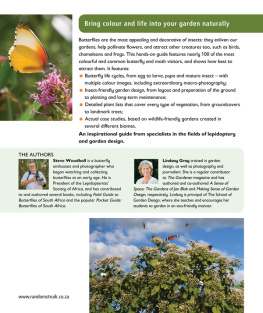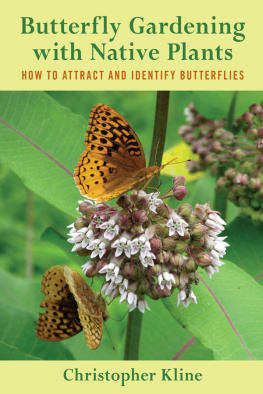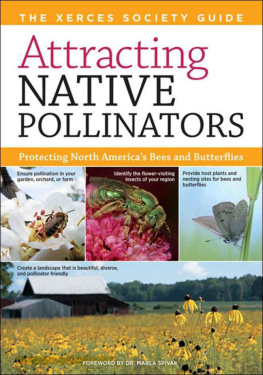George Oxford Miller - Native Plant Gardening for Birds, Bees & Butterflies
Here you can read online George Oxford Miller - Native Plant Gardening for Birds, Bees & Butterflies full text of the book (entire story) in english for free. Download pdf and epub, get meaning, cover and reviews about this ebook. year: 2021, publisher: Adventure Publications, genre: Home and family. Description of the work, (preface) as well as reviews are available. Best literature library LitArk.com created for fans of good reading and offers a wide selection of genres:
Romance novel
Science fiction
Adventure
Detective
Science
History
Home and family
Prose
Art
Politics
Computer
Non-fiction
Religion
Business
Children
Humor
Choose a favorite category and find really read worthwhile books. Enjoy immersion in the world of imagination, feel the emotions of the characters or learn something new for yourself, make an fascinating discovery.
- Book:Native Plant Gardening for Birds, Bees & Butterflies
- Author:
- Publisher:Adventure Publications
- Genre:
- Year:2021
- Rating:5 / 5
- Favourites:Add to favourites
- Your mark:
- 100
- 1
- 2
- 3
- 4
- 5
Native Plant Gardening for Birds, Bees & Butterflies: summary, description and annotation
We offer to read an annotation, description, summary or preface (depends on what the author of the book "Native Plant Gardening for Birds, Bees & Butterflies" wrote himself). If you haven't found the necessary information about the book — write in the comments, we will try to find it.
Native Plant Gardening for Birds, Bees & Butterflies — read online for free the complete book (whole text) full work
Below is the text of the book, divided by pages. System saving the place of the last page read, allows you to conveniently read the book "Native Plant Gardening for Birds, Bees & Butterflies" online for free, without having to search again every time where you left off. Put a bookmark, and you can go to the page where you finished reading at any time.
Font size:
Interval:
Bookmark:

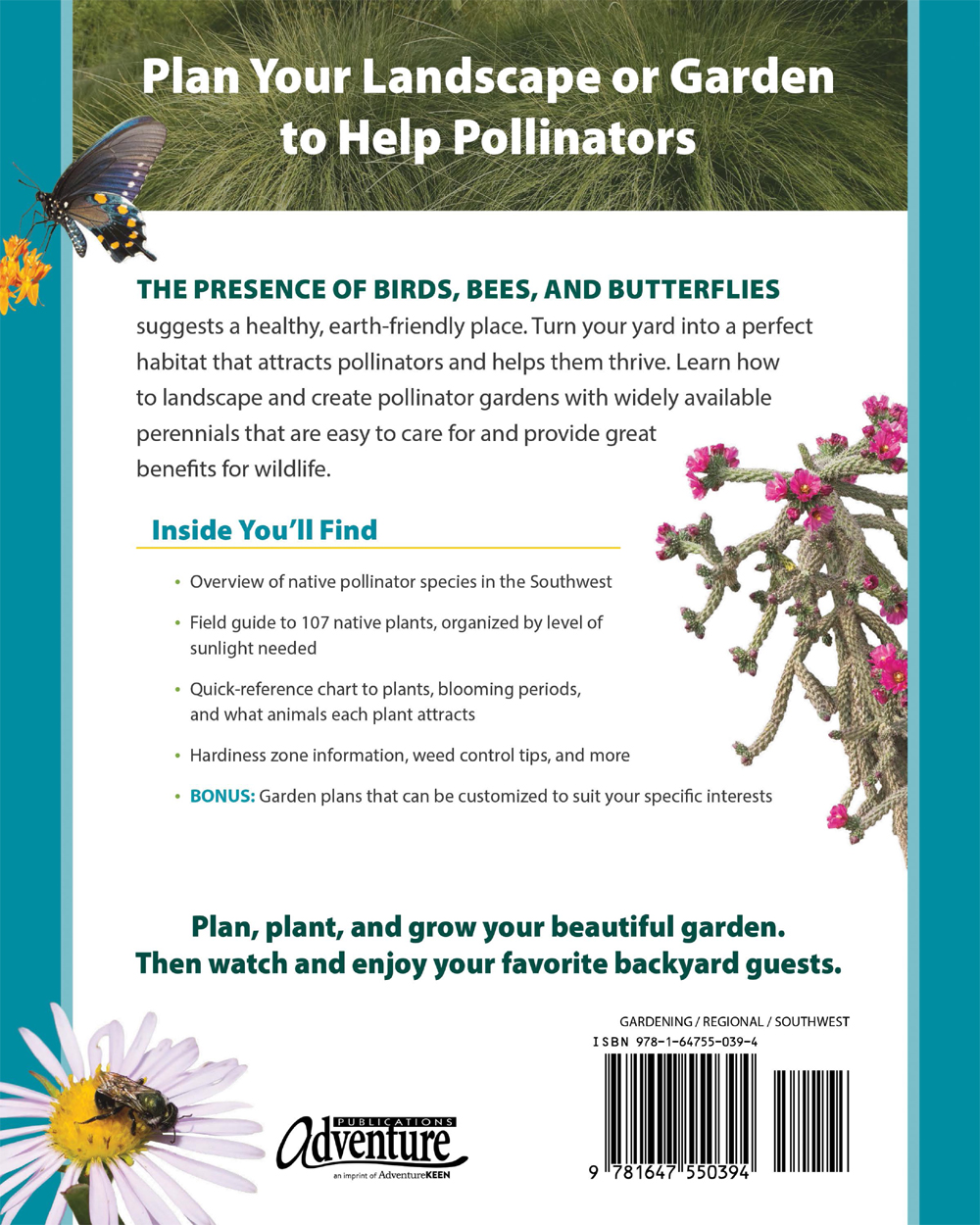

DEDICATION
My unbounded thanks goes to my wife, Carole Price, for her patience and endurance while we wandered the wilds of the Southwest, even when she had to bring a novel to read while I searched for the perfect photos.
ACKNOWLEDGMENTS
This book is but one additional step built on the decades-long efforts of numerous individuals and organizations who champion landscaping with native plants to remediate the environmental damage caused by human development.
O Friend!
In the garden of thy heart plant naught but the rose of love.
Bahullh, founder of the Bahai Faith
Cover and book design by Jonathan Norberg
Edited by Brett Ortler and Ritchey Halphen
Proofread by Emily Beaumont
Photo credits:
Front cover: all photos by George Oxford Miller except, birdhouse by Mila Naumova/ shutterstock.com ; Cabbage butterfly by petrovichlili/ shutterstock.com ; Anna's hummingbird by Torii Lynn Weaver/ shutterstock.com
Back cover: all photos by George Oxford Miller except, Pipevine swallowtail butterfly by Sari ONeal/ Shutterstock.com ; Cane cholla by Rick and Nora Bowers
All photos by George Oxford Miller unless otherwise noted.
All photos copyright of their respective photographers.
Carol Price:
Images used under license from shutterstock.com .
Africa Studio:
These images are licensed under the Attribution 2.0 Generic (CC BY 2.0) license, which is available at (Tiger moth);
These images are licensed under the CC0 1.0 Universal (CC0 1.0) Public Domain Dedication license, which is available at
10 9 8 7 6 5 4 3 2 1
Native Plant Gardening for Birds, Bees & Butterflies: Southwest
Copyright 2021 by George Oxford Miller
Published by Adventure Publications
An imprint of AdventureKEEN
310 Garfield Street South
Cambridge, Minnesota 55008
(800) 678-7006
www.adventurepublications.net
All rights reserved
Printed in the United States of America
ISBN 978-1-64755-039-4 (pbk.); ISBN 978-1-64755-040-0 (ebook)
Table of Contents
Introduction
In 1991 when I published my first book on landscaping with native plants of the Southwest, the emphasis was on replacing thirsty exotic ornamentals with water-wise native plants adapted to survive local climate extremes. In the intervening decades, native plant advocates emphasized reducing maintenance costs and creating a sense of place that embraces each regions unique biological heritage. Lady Bird Johnson, founder of the National Wildflower Center, famously said, Florida should look like Florida and Texas look like Texas.
The beginning of the 21st century has witnessed an alarming increase of environmental destruction by urban sprawl, industrial expansion, global scale pollution, and planet-wide climate change. Pollinatorsinsects that pollinate flowershave been hit particularly hard, with some regions losing up to 80% of insect numbers and diversity. Today, a major emphasis in native plant landscaping is to mitigate the habitat lost by our human activities. A pollinator garden will help repair our local environment one yard at a time.
Why Plant a Pollinator Garden?
The complex relationships in nature can fill us with a deep sense of mystery and even magic. You can look into the starry night sky and feel either insignificant in the scope of the universe or thrill ed to be a part of the vast majestic cosmos. You can get the same feeling in your backyard when you see a butterfly or bee dancing from flower to flower sipping nectar and gathering pollen.
From our backyards to the tropical rainforests, the complex web that sustains life on the planet depends on native pollinators. Globally, insects pollinate nearly 80% of all flowering plants. Closer to home, pollinators fertilize 75% of all human food crops, specifically the fruits, vegetables, and nuts we eat. In our backyard gardens, tomatoes, squash, peppers, fruit trees, and flowers all depend on pollinators.
Yet across the planet the population of all insects is plummeting radically year by year. One overriding reason is that human activities have significantly altered 75% of the planets landmass. Forty percent of the natural area in the continental United States has been altered, including 59% in the Midwest and 47% in the South. With the Southwests burgeoning population, pristine plant and animal communities that have evolved together since the last ice age are being replaced by sprawling cities, suburbs, industrial farms, and energy development.
A significant portion of the natural habitat sacrificed for urban expansion is replaced by homes, businesses, and public medians and roadsides that are landscaped with gravel mulch and exotic ornamentals originally from other parts of the world. For native pollinators, such landscapes offer about as much sustenance as an asphalt parking lot. The simple fact is that to survive, native pollinators need native plants.
So what good can a small backyard garden do to help sustain local pollinator populations? Youll be pleasantly surprised! Wildlife in the Southwest thrives in what ecologists call a patchy environment. Butterflies, bees, birds, and other pollinators forage over large areas, depending on their mobility, to find often ephemeral patches of food, water, shelter, and nesting sites. Spotty thunderstorms may stimulate a desert foothill mass bloom that only lasts a week or so. Storm runoff triggers a temporary bloom of desert willow and prairie clover along a normally dry arroyo, while a perennial trickle spring may support a small, summer-long succession of blooms.
Many of the temporary oases that pollinators frequent on their daily foraging routes are no larger than the average backyard. But our yards can be better than a here-today, gone-tomorrow stopover. The greater gardening goal goes beyond planting a patch of pretty flowers, though thats certainly commendable in itself. It encompasses the long-term development of a mini backyard refuge, a wildlife habitat that supplies the food, water, shelter and nesting sites that butterflies, bees, and birds require to support a year-round sustainable population.
Gardens start with a dream and build into a passion. This book will help you create a pollinator garden encompassing a diversity of plants with a variety of sizes and shapes, and with plants that bloom from early spring to late fall. So grab your spadeplant it and they will come!
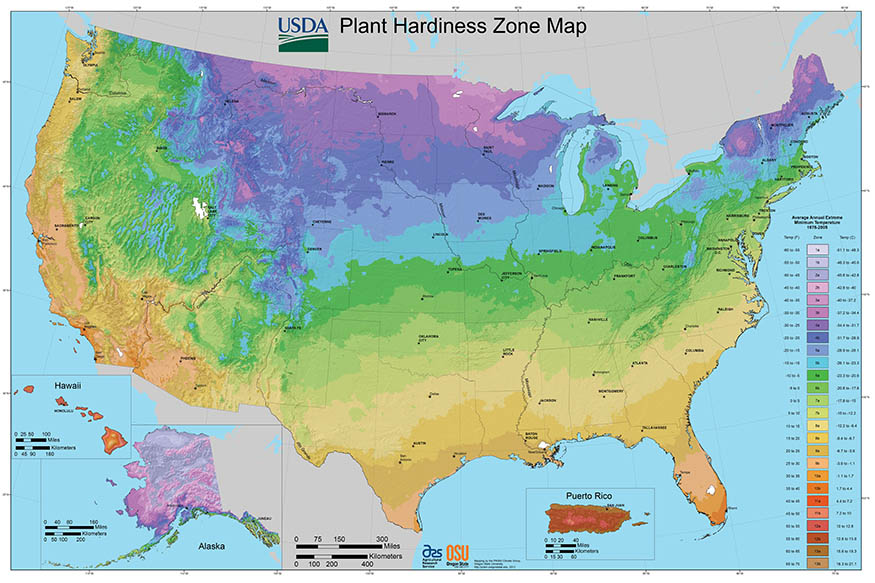
Credit: USDA Plant Hardiness Zone Map, 2012. Agricultural Research Service, U.S. Department of Agriculture. Accessed from https://planthardiness.ars.usda.gov/.
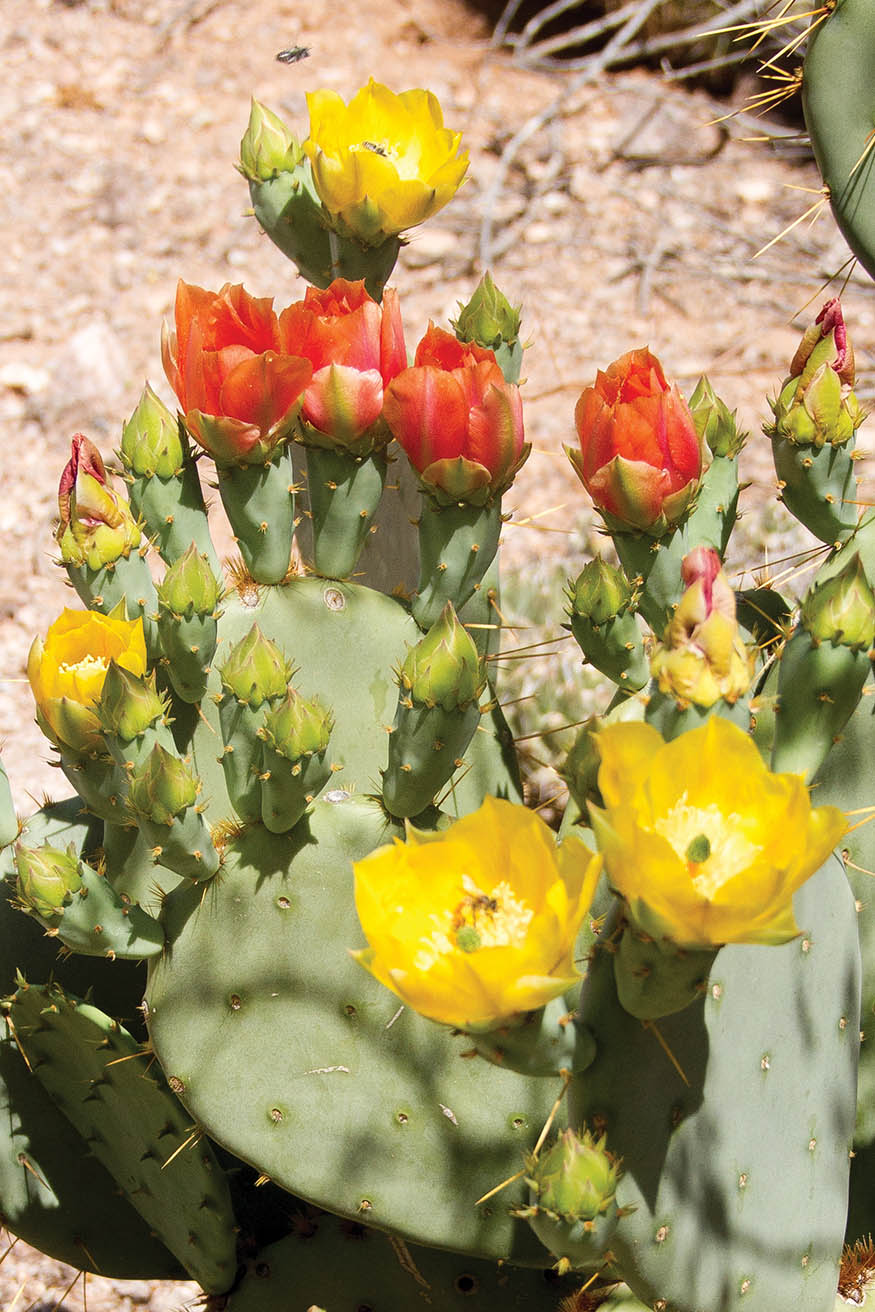
Cactus flowers
GARDENING IN THE DRY SOUTHWEST
Designing and maintaining a pollinator gardenor, for that matter, any type of garden in the Southwestrequires considerations not required in other areas. In this region, which includes Las Vegas, Phoenix, Tucson, Flagstaff, Albuquerque, Santa Fe, and El Paso, one size does not fit all.
From parched low deserts that receive less than 5 inches of precipitation annually to high-altitude conifer forests with 3050 inches a year, the Southwest encompasses five U.S. Department of Agriculture (USDA) ecoregion provincesmore than any single state. Each province is defined by different heat, rain, and temperature profiles and the plant communities they support. The regions USDA cold-hardiness zones range from 4b, with lows of 25F, to 10b, with lows of a balmy 40F.
Next pageFont size:
Interval:
Bookmark:
Similar books «Native Plant Gardening for Birds, Bees & Butterflies»
Look at similar books to Native Plant Gardening for Birds, Bees & Butterflies. We have selected literature similar in name and meaning in the hope of providing readers with more options to find new, interesting, not yet read works.
Discussion, reviews of the book Native Plant Gardening for Birds, Bees & Butterflies and just readers' own opinions. Leave your comments, write what you think about the work, its meaning or the main characters. Specify what exactly you liked and what you didn't like, and why you think so.

